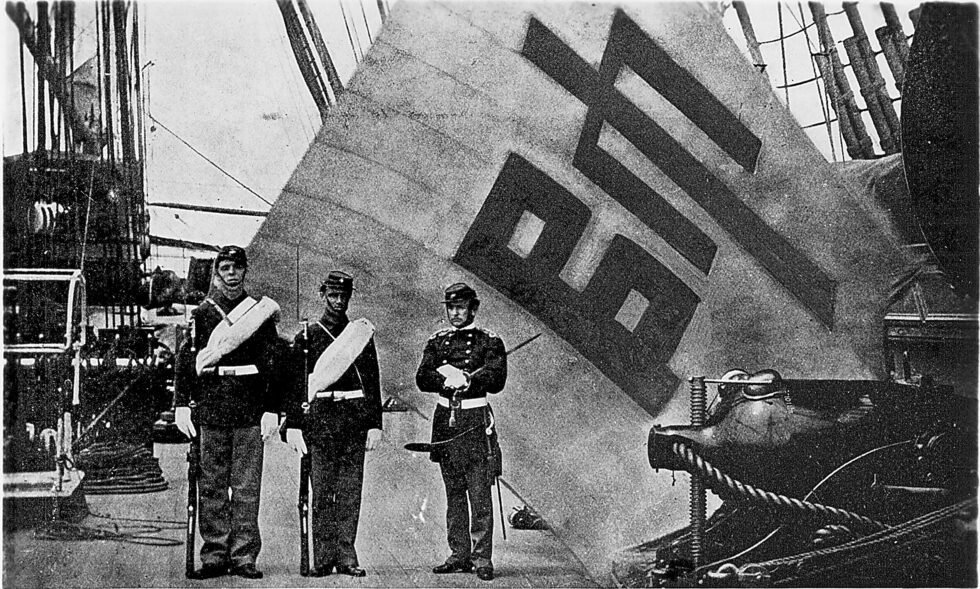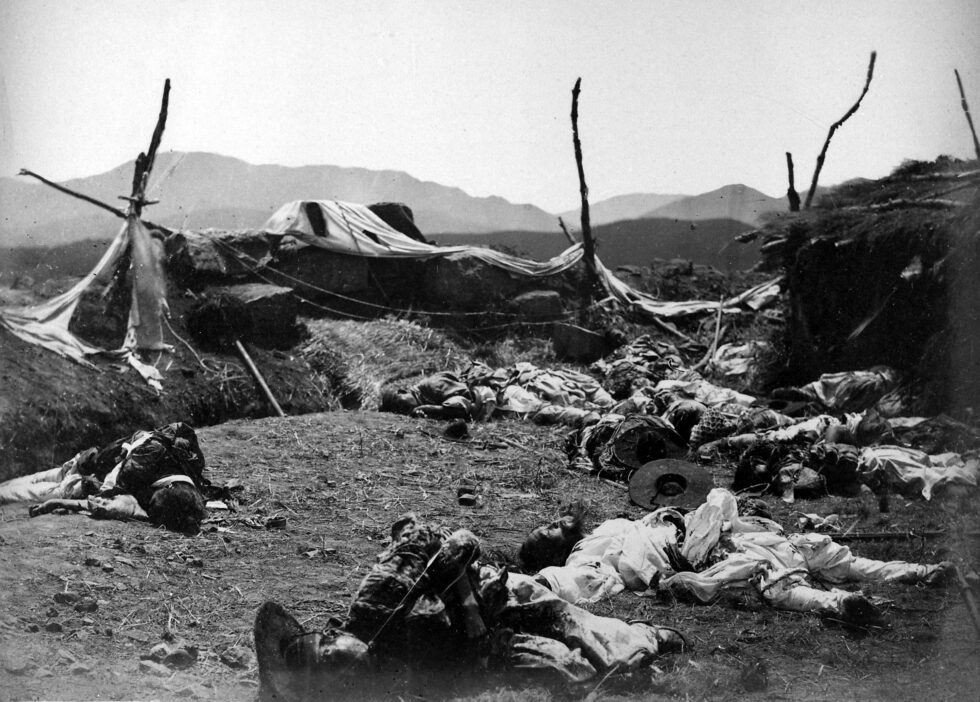Sometimes good relationships get off to a bad start. The United States and South Korea are a case in point. Today, Seoul is a valued American ally. But U.S.-Korean relations started with conflict rather than cooperation when on June 10, 1871, the U.S. Navy Expedition to Korea sent to open relations with Korea instead waged the Battle of Ganghwa.
The Main Purpose of Expedition to Korea
The backdrop for the hostilities was the American desire to establish trade relations with Korea. Like its neighbor Japan, Korea in the mid-nineteenth century was hostile to foreign influences, so much so that it earned the nickname of “the Hermit Kingdom.” Japan agreed to sign a commercial treaty with the United States only at the point of a gun after a fleet headed by Commodore Matthew Perry appeared in Tokyo Bay in 1854.

American merchants hoped that a similar treaty could be struck with Korea. But the outbreak of the Civil War in 1861 ended U.S. interest in Asia for a time. After Gen. Robert Lee’s surrender at Appomattox in 1865, that American merchants again turned their eyes to the region and began developing an expedition to Korea that was launched out of Nagasaki, Japan in May 1871 with an “armada” of five U.S. warships and 1,230 men under the command of Admiral John Rogers.
Also aboard the ships were a group of diplomats who were there to create trade with the country, as well as establish good will. They also wanted to investigate what happened to the General Sherman (a merchant ship that mysteriously disappeared) and create some sort of treaty so the Koreans could help out with any shipwrecks that occurred.
The merchant ship General Sherman had arrived in Korea in 1866 to meet with Korean officials to initiate trade. Although the ship was armed, it was primarily a merchant ship and was carrying cotton, tin, and glass. There was no military presence onboard, and the crew was made up of Asian sailors, American traders, and a missionary.

On arrival, the Koreans refused to trade, but they would give the crew provisions before sending them on their way. They were also told to wait for further instructions.
However, the ship left anyway and at their next stop, they were again told to stay put and wait. Shortly thereafter the ship was ordered to leave immediately, or the entire crew would be killed.
What happened next is debated. It is thought a scuffle occurred when some of the men tried to go ashore instead of leaving. Shots were fired on both sides.
The ship eventually left but ran aground later and was then set on fire by the Koreans. The crew, while attempting to escape, were beaten to death.
Possibly trying to avoid the blame, the Koreans would not speak of the General Sherman incident and the matter of what happened to the ship was dropped.
American Armada Entered the Ganghwa Straits on the West Coast of Korea
On June 1st, the American armada entered the Ganghwa Straits on the west coast of Korea. Their goal was to steam up the Han River, which led to the capital city of Hanyang (modern day Seoul). However, Gojon, the Korean king, had barred foreign ships from entering the Han. So when the American ships passed by, the Korean garrison onshore fired. Their outdated weapons did no damage, but that didn’t matter to Admiral Rogers. He gave the Koreans ten days to apologize for what he regarded as an unprovoked assault.

The Koreans refused to comply. So Admiral Rogers made good on his threat. On June 10, the U.S. ships attacked the Choji Garrison located on the Salee River on the island of Ganghwa-do. It was a mismatch from the start. The garrison was lightly defended, poorly equipped, and badly outnumbered.
The U.S. soldiers bombarded the Citadel and then ground troops charged, quickly taking over. The Koreans, with a loss of proper firearms, ended up throwing rocks at their attackers. U.S. Marines and sailors then went on to overrun several other Korean posts on the island, including Deokjin Fort, which was abandoned.

When the smoke cleared at the end of the day, the Americans controlled Ganghwa-do at the cost of three dead. The Koreans weren’t so fortunate. They lost more than two-hundred-and-forty men.
The total fighting only lasted about 15 minutes. The wounded included 10 Americans. Twenty Koreans were captured. Five forts were impacted in total.
Treaty of Amity and Commerce as a Result of Expedition to Korea
The American victory marked the first time that the stars and stripes were raised over Asian territory by force.
The U.S. again tried to work with the Koreans to make diplomatic progress by attempting to use their Korean prisoners as bargaining tools. However, the Korean leaders did not want the captured men. They believed any man who allowed himself to be captured was a coward, so they did not want such a man back.
Fifteen Americans – nine sailors and six marines – earned Medals of Honor for their bravery during the campaign, making them the first Medal of Honor recipients to be honored for fighting on foreign soil.
With no hope of forward diplomatic movement with the Koreans, the Americans remained stationed off-shore until July 3 and then left Korea for China.

The Americans hoped that their victory would persuade the Koreans to negotiate. It did not. Instead, they sent reinforcements in large numbers and armed with modern weapons. Recognizing that the odds had shifted, the U.S. fleet pulled up anchor and set sail for China on July 3, 1871.
The United States would not get a treaty with Korea until 1882. That agreement came about in good part because the Korean king was hoping that U.S. support could help him preserve Korea’s independence from China.
The 1882 treaty established “permanent relations of amity and friendship” between the peoples of Korea and the United States. That amity with South Korea continues to this day. But most Americans don’t know that as the historian Robert Kagan put it, “the self-proclaimed disinterested and peace-loving Americans had introduced themselves to Korea by killing its people.”
Naturally, the animosity between Korea and the U.S grew after this incident. The Koreans vehemently refused to work with the American diplomats.
There would be no negotiations on their part. They were even less welcoming to Western visitors and all foreigners, isolating the country from everything outside.
Even so, the Koreans did not attack any other foreign ships. The period of isolation did not last very long. A few years later Korea began to trade with nearby neighbor Japan followed by Europe and finally the United States.
It wasn’t until 1950 when the Americans and its allies returned to fight another war in Korea. This time the Korean people welcomed the United Nations forces with open arms.
Read About Other Battlefield Chronicles
If you enjoyed learning about U.S. Expedition to Korea, we invite you to read about other battlefield chronicles on our blog. You will also find military book reviews, veterans’ service reflections, famous military units and more on the TogetherWeServed.com blog. If you are a veteran, find your military buddies, view historic boot camp photos, build a printable military service plaque, and more on TogetherWeServed.com today.

0 Comments